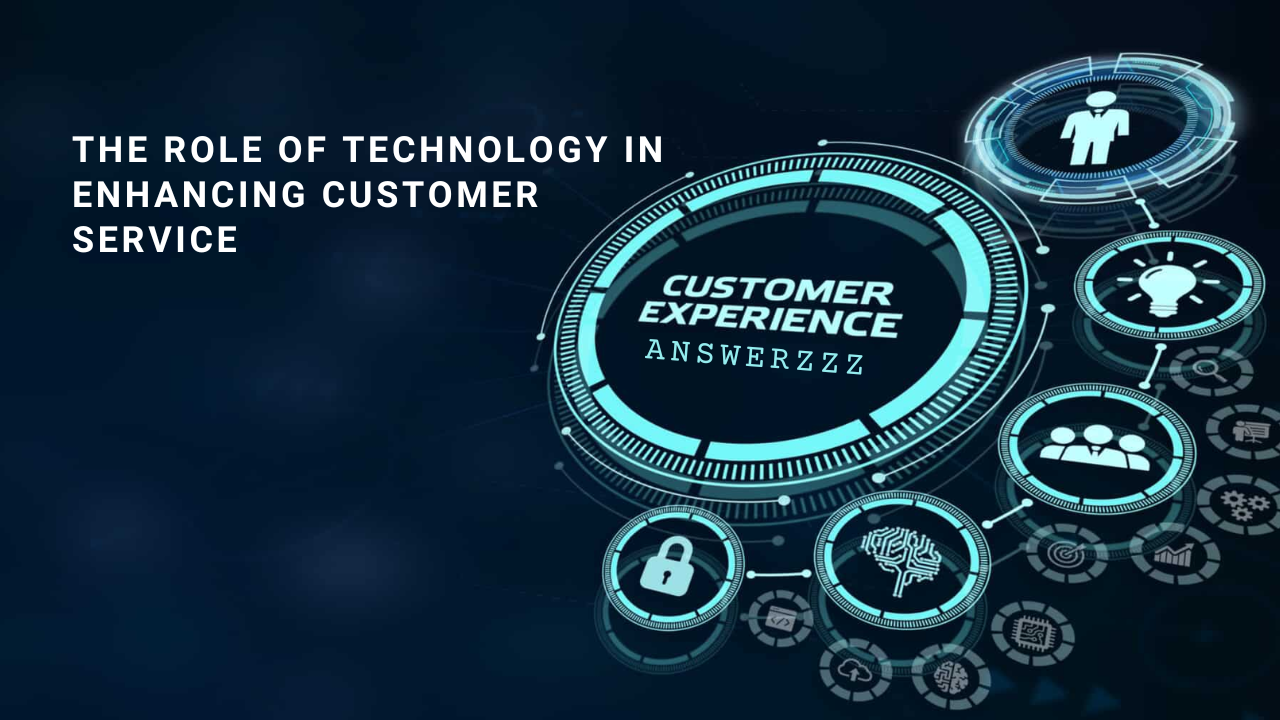In today’s fast-paced and highly competitive marketplace, exceptional customer service has become a vital differentiator for businesses. As consumers demand more personalized and efficient interactions, technology has emerged as a powerful tool to enhance customer service. From chatbots to AI-driven analytics, technology not only streamlines processes but also fosters deeper connections between businesses and their customers. This article explores the various ways technology is transforming customer service, highlighting its benefits, challenges, and future trends.
1. The Importance of Customer Service

Customer service is the backbone of any successful business. It directly influences customer satisfaction, loyalty, and retention rates. According to a survey by HubSpot, 93% of customers are more likely to make repeat purchases with companies that offer excellent customer service. Therefore, businesses must invest in strategies that improve the customer experience.
1.1 Customer Expectations
Modern consumers have high expectations regarding service delivery. They expect:
- Speed: Quick responses and resolutions.
- Availability: 24/7 support through multiple channels.
- Personalization: Tailored interactions based on their preferences and history.
- Consistency: Uniform service quality across all platforms.
Technology enables businesses to meet these expectations more effectively than ever before.
2. Technology in Customer Service
2.1 Omnichannel Support
Omnichannel support integrates multiple communication channels, allowing customers to interact with businesses seamlessly. Whether through social media, email, live chat, or phone calls, customers can choose their preferred method of communication.
Benefits of Omnichannel Support
- Enhanced Customer Experience: Customers can switch between channels without losing context.
- Increased Engagement: Businesses can engage customers where they are most active.
- Data Integration: Collecting data across channels provides a comprehensive view of customer interactions.
2.2 Artificial Intelligence (AI)
AI has revolutionized customer service, enabling businesses to automate processes and provide personalized experiences. Here are some ways AI is being utilized:
2.2.1 Chatbots
Chatbots are AI-driven tools that interact with customers in real time. They can answer frequently asked questions, assist with order tracking, and even help complete purchases.
Advantages of Chatbots:
- 24/7 Availability: Chatbots provide instant support, reducing wait times for customers.
- Cost Efficiency: Automating routine inquiries frees up human agents for more complex issues.
- Scalability: Businesses can handle an influx of inquiries without additional staffing.
2.2.2 Predictive Analytics
Predictive analytics uses historical data and machine learning algorithms to forecast customer behavior. This enables businesses to anticipate needs and tailor their services accordingly.
Benefits of Predictive Analytics:
- Proactive Customer Support: Businesses can address issues before they escalate.
- Personalized Marketing: Understanding customer preferences allows for targeted promotions.
- Improved Inventory Management: Anticipating demand helps in managing stock levels effectively.
2.3 Customer Relationship Management (CRM) Systems
CRM systems are essential tools for managing customer interactions and data. They help businesses track customer interactions, preferences, and purchase history, enabling personalized service.
Features of CRM Systems:
- Centralized Database: All customer information is stored in one location, making it easy for agents to access.
- Automation of Routine Tasks: CRMs can automate follow-ups and reminders, improving efficiency.
- Analytics and Reporting: Businesses can analyze customer data to identify trends and areas for improvement.
2.4 Self-Service Solutions
Many customers prefer to find answers independently. Self-service solutions, such as knowledge bases and FAQ sections, empower customers to resolve issues without contacting support.
Benefits of Self-Service Solutions:
- Convenience: Customers can access information at any time, improving satisfaction.
- Reduced Workload for Support Teams: Fewer inquiries mean agents can focus on more complex issues.
- Cost Savings: Self-service options are often more cost-effective than live support.
2.5 Social Media Engagement
Social media has transformed the way businesses interact with customers. Platforms like Twitter, Facebook, and Instagram allow companies to provide real-time support and engage with their audience.
Advantages of Social Media Engagement:
- Immediate Response: Businesses can address customer inquiries quickly and publicly.
- Brand Building: Engaging content fosters a sense of community and strengthens brand loyalty.
- Feedback and Insights: Social media serves as a valuable channel for gathering customer feedback and opinions.
3. The Benefits of Technology in Customer Service

3.1 Improved Efficiency
Technology streamlines customer service processes, allowing businesses to handle inquiries more efficiently. Automation reduces the time spent on repetitive tasks, enabling agents to focus on providing high-quality service.
3.2 Enhanced Customer Experience
With personalized interactions, quick response times, and multiple channels of communication, technology significantly enhances the overall customer experience. Customers feel valued and understood, which fosters loyalty.
3.3 Increased Customer Satisfaction
When customers receive timely and effective support, their satisfaction levels increase. Happy customers are more likely to become repeat buyers and advocates for the brand, leading to increased revenue and market share.
3.4 Data-Driven Insights
Technology provides valuable data that can inform business strategies. By analyzing customer interactions, preferences, and feedback, businesses can identify trends and make informed decisions to improve their services.
4. Challenges of Implementing Technology in Customer Service
While technology offers numerous benefits, businesses must also navigate several challenges when implementing these solutions.
4.1 Initial Costs
Investing in technology can be costly, especially for small businesses. The initial setup, ongoing maintenance, and training can strain budgets.
4.2 Integration Issues
Integrating new technology with existing systems can be complex. Businesses must ensure that all tools work seamlessly together to avoid disrupting operations.
4.3 Balancing Automation and Human Interaction
While automation can enhance efficiency, excessive reliance on technology can lead to a lack of personal touch. Striking the right balance between automated responses and human interaction is crucial.
4.4 Data Privacy Concerns
As businesses collect more customer data, they must prioritize data privacy and security. Ensuring compliance with regulations, such as GDPR, is essential to maintain customer trust.
5. Future Trends in Customer Service Technology

As technology continues to evolve, so too will its role in enhancing customer service. Here are some future trends to watch for:
5.1 Increased Use of AI and Machine Learning
AI and machine learning will continue to play a significant role in automating customer service processes. Advanced algorithms will enable even more personalized interactions and proactive support.
5.2 Voice Assistants and Natural Language Processing (NLP)
Voice technology is gaining traction as more consumers use voice assistants like Alexa and Google Assistant. NLP will enhance the ability of chatbots and virtual assistants to understand and respond to customer inquiries more naturally.
5.3 Enhanced Personalization
With more data available, businesses will be able to deliver increasingly personalized experiences. Tailored recommendations, targeted marketing, and customized support will become standard.
5.4 Integration of Augmented Reality (AR)
AR technology can transform customer service in sectors like retail and hospitality. For example, customers can use AR to visualize products in their homes before making a purchase.
5.5 Greater Emphasis on Customer Feedback
As businesses strive for continuous improvement, customer feedback will play an even more critical role. Technologies that facilitate real-time feedback collection and analysis will become essential.
The role of technology in enhancing customer service cannot be overstated. By adopting innovative solutions, businesses can meet the ever-evolving expectations of consumers, streamline operations, and foster deeper customer relationships. While challenges exist, the benefits far outweigh the drawbacks, making technology an indispensable ally in the pursuit of exceptional customer service. As we move forward, embracing new technologies will be key to staying competitive in an increasingly digital world.



